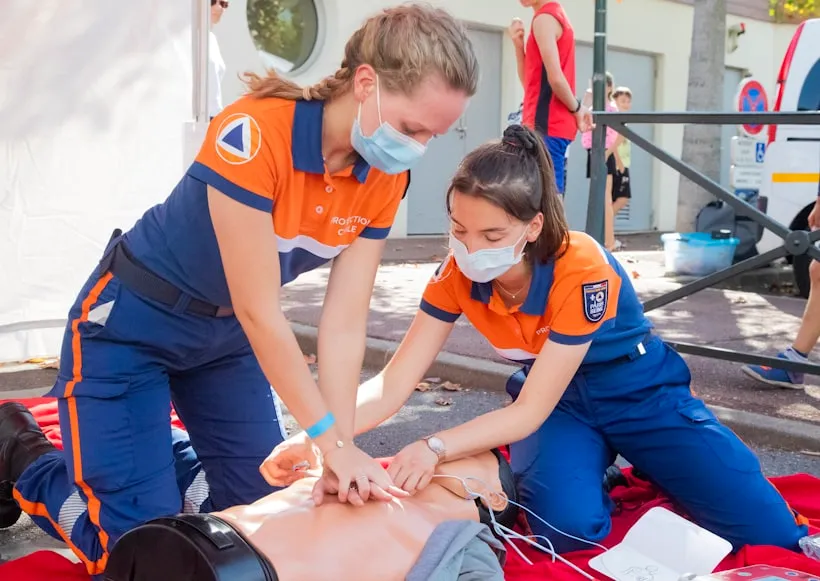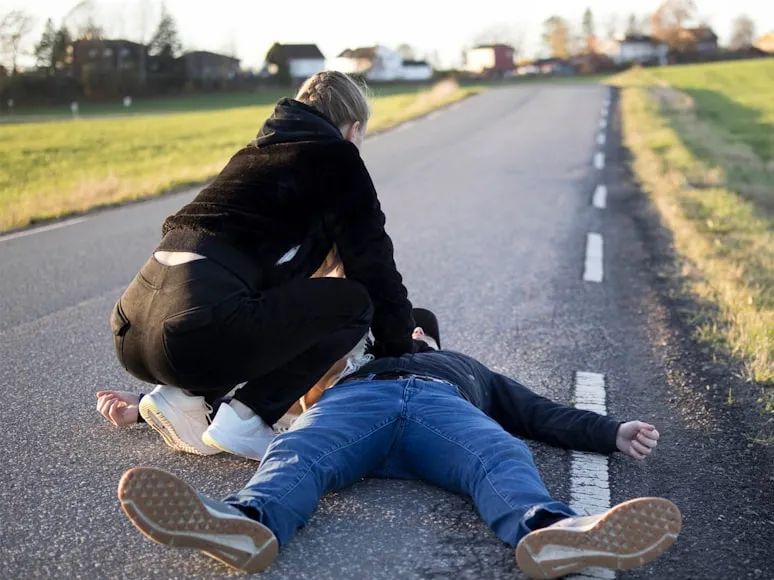Regarding the recent mishappenings and unpleasant events happening in our different societies, it is pertinent that First Aid education and other emergency or life-saving skills should be handy and everyone should be literate about these skills.
A lot of deaths happening in our societies today could be avoided if these life-saving skills were handy. People die in fire outbreaks simply because no one knows how to use the extinguisher or any other method of putting out fire whilst waiting for the firefighters. People die of hemorrhage because there was no awareness of stopping blood before getting to the hospital.
These morbidity records hold high in certain undeveloped countries in which access to quick ambulance or hospital interventions at accident sites is at a Zero Percent.
Talking about underdeveloped countries which still cling to their traditions and fetish beliefs. These beliefs in one way or another hinder health processes and medical healing processes.
For example, some communities believe that when one is drowned in a river or high sea, the goddess of the river or water spirits caused it and so therefore medical intervention is not really needed as the person is to be moved to the shrine for some rituals.
Just Yesterday a popular Actor in my country got drowned in the river Niger whilst shooting a movie with no safety measures and just after his body was recovered instead of Basic First aid being applied to him, he was rushed to the morgue and then to the shrine and then to the hospital where he finally kicked the bucket.
This would have been an avoidable death if
Safety measures were taken before traveling on a river
Even after his Unconscious body was recovered absolutely no one knew the basic Resuscitation Method for a drowned person.
This article focuses on enlightening us about Cardiopulmonary Resuscitation (CPR)
Immediately after this event occurred everyone is ranting about CPR, so let's get the right information together.
Cardiopulmonary Resuscitation is a Basic First Aid Procedure administered in a case of emergency to a person whose heartbeat has stopped or whose breathing ceased. This is common with a drowned person or one with cardiac Arrest.

CPR consists of continuous chest Compressions combined with mouth-to-mouth or rescue Breathing which aims at manually preserving the brain functions until further measures to restore blood circulation are taken. CPR involves chest compressions accompanied by artificial ventilation by exhaling into the victim's mouth or nose( also known as mouth-to-mouth resuscitation).
However, CPR has not been proven to completely restart the heart but its sole purpose is to allow partial flow of oxygenated blood into the brain (to avoid permanent brain damage) and the heart and to delay the death of some body tissues.
Cardiopulmonary Resuscitation can be administered by all, not necessarily by a trained professional because it's better to try than not even try. However, there are rules that must be followed to successfully restore the heartbeat.
Untrained.
If you're not trained in CPR and know absolutely nothing about it or worried about giving rescue breaths, then provide hands-only CPR and avoid rescue Breathing.
Hands-Only CPR means uninterrupted chest compressions of 100 to 120 counts per minute until a medical personnel arrives.
Trained
For Trained Professionals, check for pulse and respiration, if none commence chest compressions giving 30 per minute accompanied by two rescue Breaths

Always Remember the Acronyms, CAB
Compression
Airways
Breathing
Compressions:
-using your hands to push down hard and fast on a person's chest. Compression is a vital step in CPR because it helps to restore blood flow.
According to research from Mayoclinic, here are the basic steps involved in CPR.
Steps in Compressions
Lay the person on their back on a stable surface.
Kneel next to the person's neck and shoulders.
Place the lower palm of your hand over the center of the person's chest, between the nipples.
Place your other hand on top of the first hand. Keep your elbows straight. Place your shoulders directly above your hands.
Push straight down on the chest at least 2 inches (5 centimeters) but no more than 2.4 inches (6 centimeters). Use your entire body weight, not just your arms, when doing compressions.
Push hard at a rate of 100 to 120 compressions a minute. The American Heart Association suggests performing compressions to the beat of the song "Stayin' Alive." Allow the chest to spring back after each push.
If you haven't been trained in CPR, continue chest compressions until there are signs of movement or until emergency medical personnel take over. If you have been trained in CPR, go on to opening the airway and rescue breathing.
Airway: Open the airway
If you're trained in CPR and you've performed 30 chest compressions, open the person's airway using the head-tilt, chin-lift maneuver. Put your palm on the person's forehead and gently tilt the head back. Then with the other hand, gently lift the chin forward to open the airway.
Breathing: Breathe for the person
Rescue breathing can be mouth-to-mouth breathing or mouth-to-nose breathing if the mouth is seriously injured or can't be opened. Current recommendations suggest performing rescue breathing using a bag-mask device with a high-efficiency particulate air (HEPA) filter.
After opening the airway (using the head-tilt, chin-lift maneuver), pinch the nostrils shut for mouth-to-mouth breathing and cover the person's mouth with yours, making a seal.
Prepare to give two rescue breaths. Give the first rescue breath — lasting one second — and watch to see if the chest rises.
If the chest rises, give a second breath.
If the chest doesn't rise, repeat the head-tilt, and chin-lift maneuver and then give a second breath. Thirty chest compressions followed by two rescue breaths is considered one cycle. Be careful not to take too many breaths or to breathe with too much force.
Continue chest compressions to restore blood flow.
Continue CPR until there are signs of movement or emergency medical personnel take over.